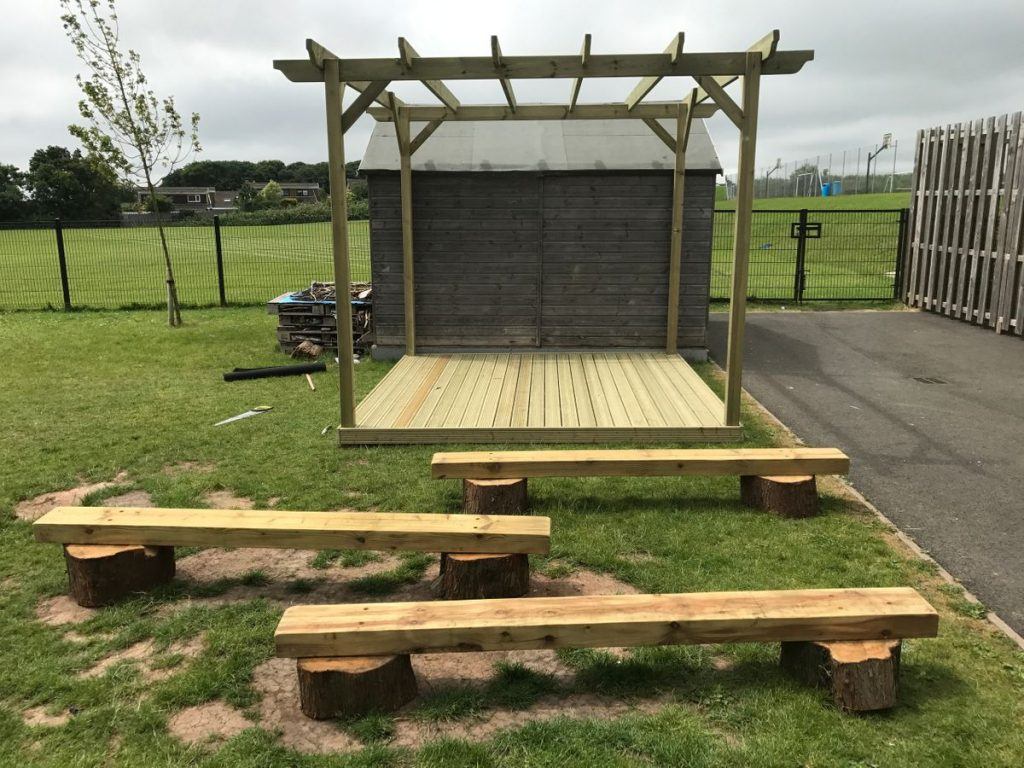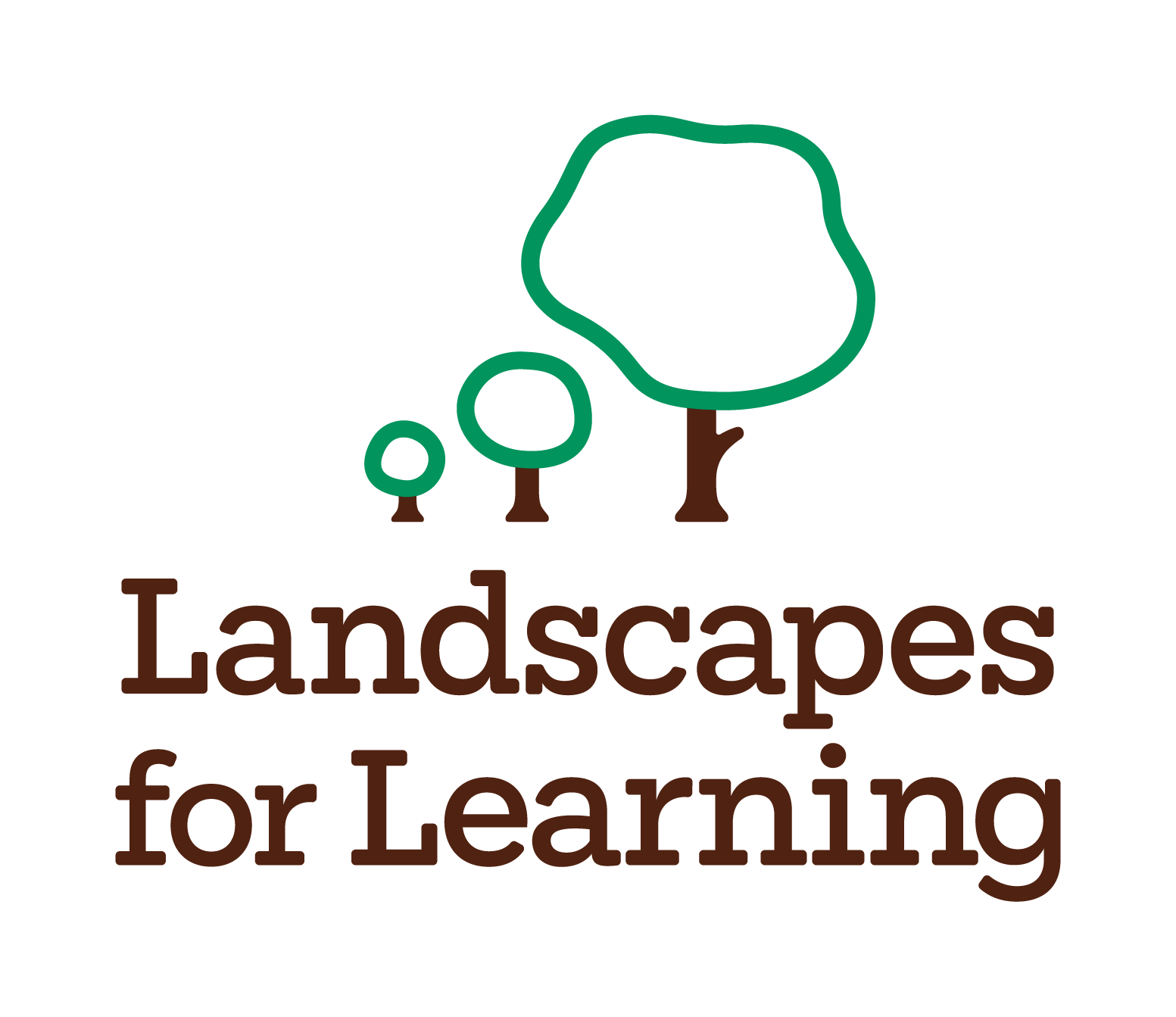Our favourite pieces of outdoor learning equipment

‘Outdoor learning’ is such an umbrella term, used for all sorts of situations around being with kids, outside! Whether you’re trying to take a more traditional classroom-style learning environment into an outdoor context, looking to help broaden children’s capacity to play, teach a little about sustainability and ecology, encourage the development of peer relationships and socialising, looking to develop certain early skill sets, or simply looking for an environment to help them blow off a little steam, outdoors is the place to be.
Although a simple square of outdoor space is enough for children to build their own mini-worlds within, an enriched outdoor space can be an amazing prompt. Outdoor learning environments can boost everything from children’s social skills to their imagination and fine motor skills to their balance and judgment! This is about learning through direct experience – the best way to build and cement new knowledge and behaviours.
Research suggests that outdoor play is valuable from the earliest ages right through, bringing awareness of sustainability and ecology, boosting self-regulation, lowering stress levels, and augmenting children’s self-confidence and intra-personal skills.
Outdoor learning is a broad church, too. It re-inspires and re-invigorates children who perhaps are not thriving in a more traditional, desk-bound environment. It can also be particularly rich for children with Special Educational Needs. The benefits aren’t restricted to the pupils’ experience, either – teachers too note improved relationships with students.
So you want to provide an outdoor learning setting – but what sort of goals are you trying to meet? What sorts of experiences are you trying to provide?
It’s important to consider what your children need most from this setting before investing in the products to help you do just that. That’s why we’ve created this article – a list of a few of our favourite pieces which hit a few of our primary educational goals – creativity and imagination, classroom-style learning, social skills and emotional development, physical strength and agility, and fine motor skills and dexterity. Obviously, some of these are more or less important depending on the age group of the cohorts you are catering to, but we hope this Landscapes for Learning list will inspire you on your journey toward creating an outdoor learning provision.
For creativity and imagination
Give kids the outdoors and they will show you their creativity. Watch pebbles become pennies and leaves become cakes which they then barter from their log, which has turned into a shop front. Watch twigs delineate a space that becomes their house. Watch leaves and feathers become a work of art.
Kids don’t need much, but the more you can provide, the further they can go in the expression of their creativity. Prompting their imaginations in certain directions also helps their play become a learning experience. Look at our favourite pieces below for outdoor learning equipment choices which help children develop a plethora of other skills whilst they play.
Mud kitchens
Mud kitchens spark imagination, as well as necessitate kids working together, fostering a spirit of teamwork. They also boost dexterity levels, as kids cook up their own creations, imagining chopping, stirring, flipping, sieving…the list goes on! This equipment isn’t only for budding chefs, either – where some children will insist on making ‘cakes’, others will use the mud kitchen as a place to make beautiful smelling perfumes, or create potions or science experiments. Choose a single-unit mud kitchen to enrich an outdoor learning space, or go for a full-scale ultimate corner mud kitchen with space for everyone to get hands-on, from Head Chef to Sous Chef to Chef de Partie to Pot Washer!
Painting easel
Outdoor painting is creativity, expression, and movement all rolled into one. We love that our clear easel can be a base to support permanent media (such as thick paper), allowing children to create lasting works of art. But the children can also draw on the clear acrylic screen itself. This ‘create, wash, repeat’ style of ephemeral art and mark-making allows them to express themselves and then wipe clean, teaching them, and you, that it’s okay to invest time in something for your own simple pleasure or practice, without a tangible, enduring outcome. Once they’re done, wash off their art and repeat, so that the children can become artists afresh every single day. This process allows a rare breather from the constant creation of more artefacts and possessions – the value here is in the making, and the enjoyment the child has at work, rather than the outcome – and that’s rare in today’s results-driven world.
Market stall
This market stall is a great way to informally bring counting into the environment, through bartering. Perhaps children want to ‘sell’ their ‘food’ – or ‘buy’ an ‘ice cream’. Both circumstances teach children about transactions, help to build the foundations of counting, and provide an environment in which children can practice their communication skills. They can create whatever environment they like, imitating, directing and controlling real-world experiences they’ve been a part of with their caregivers.
For classroom learning
Sometimes the value of outdoor learning is literally that – just being outdoors! You don’t always have to find novel ways to turn playtime into an educational experience – sometimes it’s as easy as taking story time outdoors, or learning maths in the shade.
Outdoor classrooms
If you are looking to maintain a more formal classroom environment, but with the benefits that natural surroundings bring, then an Outdoor Classroom is the answer. Whether you need only a 2mx2m open-sided gazebo-style space, or a larger 5mx5m setting (or even a bespoke space to fit your exact requirements), outdoor classrooms enable you to take advantage of the stress-relieving propensities that being outdoors brings. This new study even shows that outdoor learning then boosts subsequent engagement in learning.
Water wall
For younger learners, a water wall is a brilliant way to engage in the understanding of cause and effect and allows you to introduce basic scientific ideas such as gravity. These walls are designed to help children make decisions, and allow them to determine the gradient of the channels and the direction the water flows, to create and control different outcomes. This is inquisitive, sensory play at its best.
Storytelling chairs
Whether as a way to get children to read and tell stories to each other or as a place for children to go to read in isolation, storytelling chairs cement storytelling and reading firmly in children’s experience of childhood. Boost children’s confidence in speaking aloud, or allow them private time to get lost in new worlds alone – reading is such a valuable passion to instil.
For social skills and emotional development
Outdoor play is brilliant in the way it fosters independence. Given the space for expression in play, children naturally learn turn-taking and team cooperation, without it being instilled from ‘on high’. Allowing for exuberant play and then making space for quieter more contemplative learning also helps children to release their energy, and then settle better into more focused tasks.
22-piece wooden percussion set
Whether allowing a cacophony of sound as a vital energy release, or encouraging turn-taking and teamwork, this percussion set offers more than just what may be a child’s first exposure to music-making. Working as a team, shining individually, and working within guidelines to create something as a collective, this percussion set might instil an early love for the art of rhythm and noise-making alongside the social skills it necessitates.
Sensory Teepee
We love this sensory teepee because of its versatility. As well as functioning as a role-play prompt, it provides a small and cosy space for reading or alone time, too. We all sometimes need space to withdraw and reflect, and it’s great to provide a space like that within your framework for sometimes noisy and boisterous outdoor play. A two-coloured perspex window lets the light in, and above each window sits a space for planters and grow boxes to be installed. These teepees can ground the children in an exploration of the outside world, providing a quiet and protected place from which to watch the elements change, and a cosy space from which to build confidence before venturing back out.
For physical agility
Contrary to what many might worry, exposing children to calculated risks does not necessarily create dangerous situations. In fact, it teaches children calculated risk-taking. Exposing them to ‘real life’ situations through real equipment with (considered)dangers allows them to learn the importance of safety, judgment, and care. Encouraging children to self-risk-assess, and travel to their boundaries, not only improves their physical competencies but can boost self-confidence and judgment.
Being outdoors generally allows children to be fitter, encouraging more expansive movement, and climbing frames in particular are a great opportunity for children to challenge their own strength, agility, coordination, and stamina.
Climbing Frames
Climbing helps children to improve both their coordination and their motor skills. But it also boosts their cognitive development, through “problem solving, memory and the feelings of fear and motivation often experienced through climbing”. Allow them to carefully test, and stretch, their own limits on a climbing frame, as well as improve their physical abilities.
Balance beams
Balance beams are a simple yet effective, fun way for children to improve their balance and agility. Movement requires balance, so helping children practice this foundational skill early is ideal. Beyond the broader physical skills, better balance will allow children to have the confidence with fine motor skills like writing, too. That’s because balance improves core stability, and core stability provides a solid base to support the use of their arms and hands in finer movements.
For fine motor skills and dexterity
We love task-specific outdoor play for the development of those fine motor skills. Repetitive, controlled actions are perfect for improving digital strength and dexterity, as well as helping children to learn the inherent skills themselves.
Carpentry set
This real tools carpentry set is another example of encouraging children to safely risk-assess their own environment. Utilising real tools rather than fake, plastic ones allows children to grow in self-confidence as they achieve real expertise with a hammer, or a saw. Smaller in size so as to be workable for small hands, real tools provide the weight and functionality needed to make the tool ‘work’, these tools also allow them to develop fine motor skills (with tasks such as turning a screw) and gross motor skills too (with tasks such as using a hammer).Weaving panel
This outdoor frame weaving panel is a great way for kids to be creative whilst also training up their fine motor skills. Thread and tie materials of all different sorts in all kinds of patterns, and unthread at the end of the session to begin again next time. This is a brilliant, open-ended resource. As well as helping younger children develop a pincer grasp, weaving aids with visual tracking, building hand-eye coordination, instils the physical experience of spatial concepts (under, over, up, and down), building strength in both the dominant and non-dominant hands, and involves crossing the midline (allowing one hand to track over to the other side of the body) – amongst other things!
When looking to build an outdoor learning experience from the ground up, you might decide that a bespoke design will best cater to your needs. Our unique designs can be tailored to comprise exactly the sorts of equipment and learning environments you want to provide, within the spatial limitations you are working with.
Get in touch with Landscapes for Learning today to discuss bespoke designs, or to further explore the equipment you’d like to provide in your outdoor learning setting, and see how we can help!
